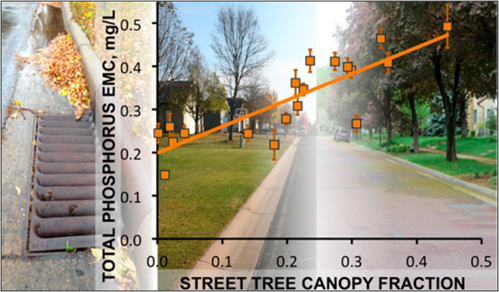
The Role of BMP Maintenance in Reducing Phosphorus in Stormwater
Stormwater quality regulations continue to expand to include treatment criteria for total phosphorus. Phosphorus is now the second-most-regulated pollutant in stormwater runoff after total suspended solids. While much has been written about BMPs used to remove total phosphorus, we shouldn’t underestimate the role BMP maintenance has on reducing phosphorus levels. More specifically, we should take into account the timing of maintenance events and the type of maintenance being performed.
Timing
Every stormwater BMP will need maintenance to ensure the system functions as designed, and the timing of maintenance can affect the annual cumulative load reduction. For example, research by Janke et al. [CF1] and the University of Minnesota suggests tree canopy cover and corresponding leaf-drop during the fall can play a significant role in influent total phosphorus concentrations, with phosphorus in stormwater increasing as the percentage of urban tree canopy increases (Figure 1). Further, Selbig 2016 demonstrated total phosphorus concentrations in the 2-3 mg/L range following leaf-drop, compared to concentrations of 0.2-0.5 mg/L for the remainder of the year (MPCA, 2022). This suggests timing BMP maintenance to the late fall to capture leaf drop before its decay may be a best practice. Similarly, deicers used in cold-weather climates have demonstrated an increase the amount of total phosphorus in snowmelt and spring runoff (MPCA 2022). Therefore, maintenance timing also may be best after the spring snowmelt to help achieve desired phosphorus removal results.
Figure 1: An increase in total phosphorus stormwater concentrations has been correlated with an increase in tree canopy cover (Janke et al, 2017).

Type of Maintenance
The type of maintenance conducted also plays a role in phosphorus reduction. For example, when maintenance is done on high-rate active-media filtration systems, the entire filter unit typically is replaced, permanently removing the captured pollutants from the waste stream. High rate membrane filtration also can permanently remove phosphorus from the waste stream, but this can depend on how well and how often filter cartridges are rinsed and replaced.
Biological systems such as rain gardens, traditional bioretention and high-rate bioretention systems rely on microbial transformation and biological assimilation to remove dissolved phosphorus from the waste stream. Many of these systems also utilize mulch as a pretreatment mechanism. When the mulch is removed and replaced during a maintenance event, a large amount of sediment and particulate-bound phosphorus can be permanently removed from the waste stream.
BMPs such as sand filters, grass strips and swales are more challenging to maintain as it relates to phosphorus removal. For example, a sand filter will only remove particulate-bound phosphorus if the top level of sand is removed and replaced; and there is no biological removal process to manage the dissolved phosphorus. As a result, some have turned to amending sand filters to include additives such as iron filings to improve phosphorus removal. To achieve long-term performance, the spent iron additive must be removed and replaced, which typically requires removing the entire sand filter media and may not be feasible.
References
Janke BD, Finlay JC, Hobbie SE. Trees and Streets as Drivers of Urban Stormwater Nutrient Pollution. Environ Sci Technol. 2017 Sep 5;51(17):9569-9579. doi: 10.1021/acs.est.7b02225. Epub 2017 Aug 11. PMID: 28756675.
Minnesota Pollution Control Agency (MPCA), 2022. “Event mean concentrations of total and dissolved phosphorus in stormwater runoff.” Minnesota Stormwater Manual. Web. May 5 2022. https://stormwater.pca.state.mn.us/index.php?title=Event_mean_concentrations_of_total_and_dissolved_phosphorus_in_stormwater_runoff
Selbig, W. R. Evaluation of leaf removal as a means to reduce nutrient concentrations and loads in urban stormwater. Sci. Total Environ. 2016, 571, 124−133.
